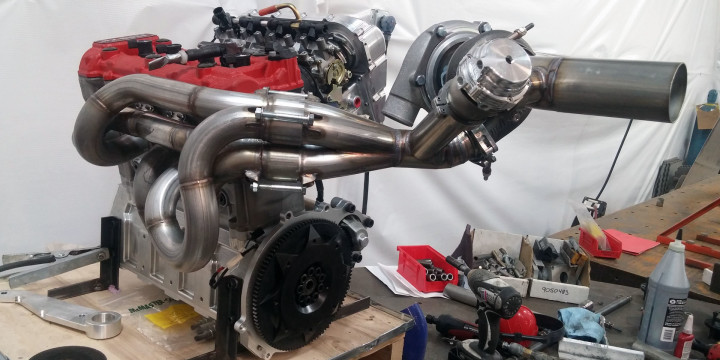The time is running short and we are scrambling to make progress. As always, there are many challenges – from parts availability and delays to learning curve both for ourselves and our vendors.
D1PPS
The build is moving forward but we really need it to move faster. The engine is coming together and we’re figuring out all the plumbing, fittings, interconnections and hardware.
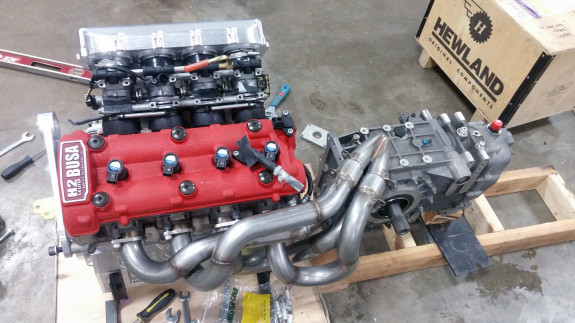
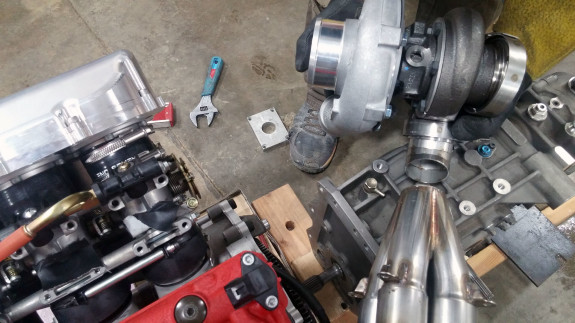
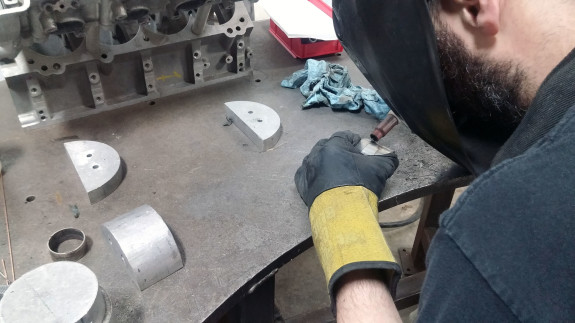
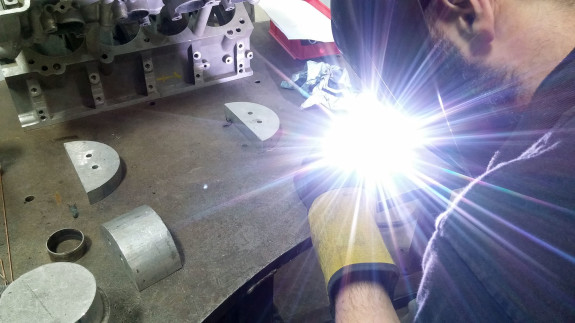
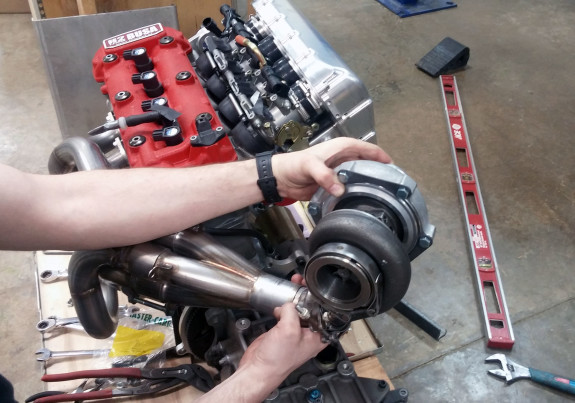
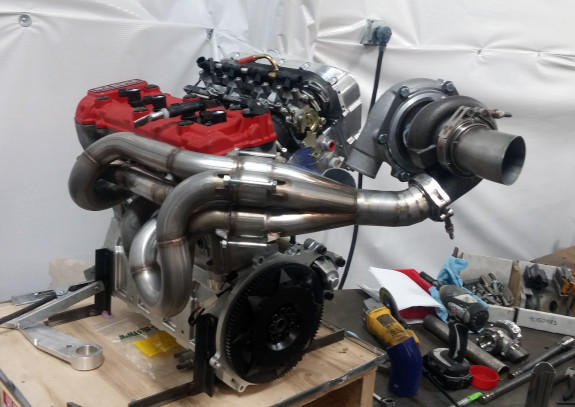
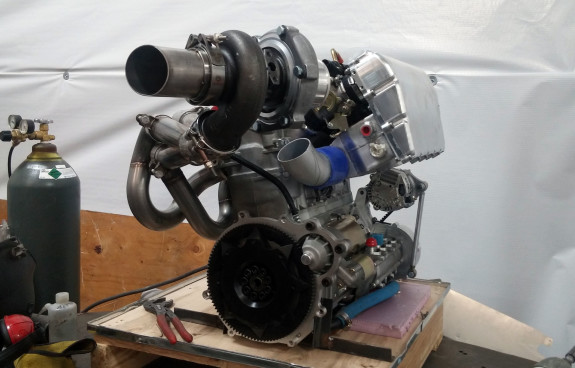
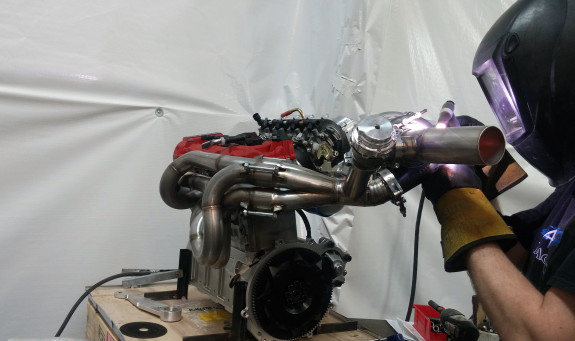
Simultaneously we are assembling drivetrain to the chassis and machining suspension boxes.
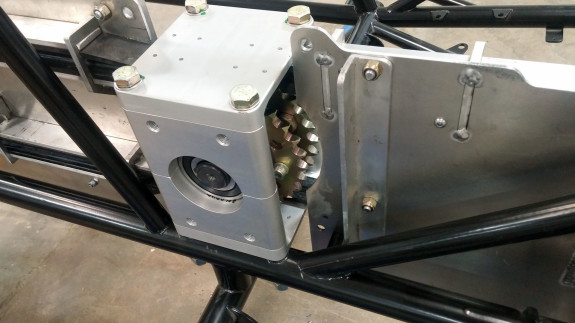
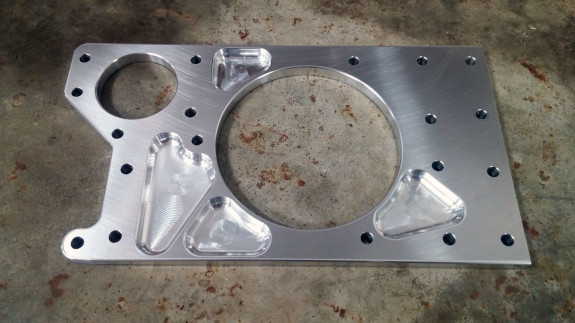
I will do a separate detailed post on the machining shortly, because it in itself is a massive challenge on our equipment. As an example, I have 9.4659″ of available travel to the right of origin, and making the part pictured above requires 9.4641″ – after some careful tweaking of the toolpaths. So only 0.0018″ room to spare but as I often say, ‘clearance is clearance’.
D2RS
It is good that at least one of our cars is already running and drivable but there are challenges here too. The intent has been to make parts by resin infusion, which is a well known but still quite technical and fussy process. It produces excellent parts, when it works. For that, the molds have to hold vacuum perfectly. This is difficult to do with multi-piece tooling that bolts together and has multiple seams.
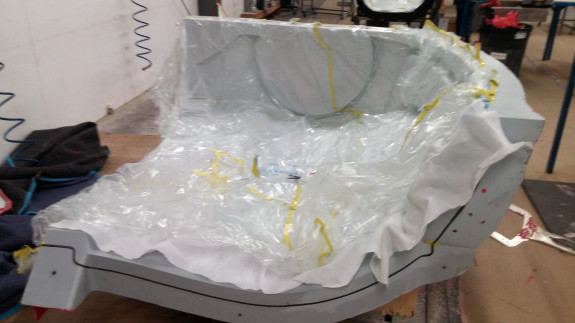
To help with that a gasket groove was built into every flange – you can see it in the picture above. Unfortunately it turns out that there are some tiny pinholes in the material, enough that the mold doesn’t seal properly. We have a couple more things to try but time is running out so we’ll most likely just go to wet layup parts and then scramble to install them at the last moment. Will add probably around 50 lbs to the car when all is said and done, but it’s better than not having the new body.
The other item we’re working on for the D2RS is a paddle shifter. Since the LSA has an electronic throttle and we want to use the stock ECU for emissions compliance, we had to find a solution for blipping the throttle to enable downshifts. There are many possible ways to ‘fool’ the ECU into thinking the pedal has been pressed, but its safeguards are very sensitive and if it thinks something is not right it will go into limp mode. Don’t want that to happen obviously. Without having a blipping solution we might as well not bother and just stick with the manual system we already have – still an option at this point.
Fortunately there is a pretty clever device out there called AutoBlip. After talking to the designer and ascertaining that his approach is reasonable, I got one and installed it. Yesterday we went to test it at ORP. I also used the opportunity to ‘test’ some of our future crew – Jake, who is going to be one of our interns this summer, and Ray, an experienced motorsports engineer who wants to see Pikes Peak as a competitor, not just a spectator. And, to make the most of all the testing, we put the 2012 aero on Neil’s D1 to see what it would do on his car.
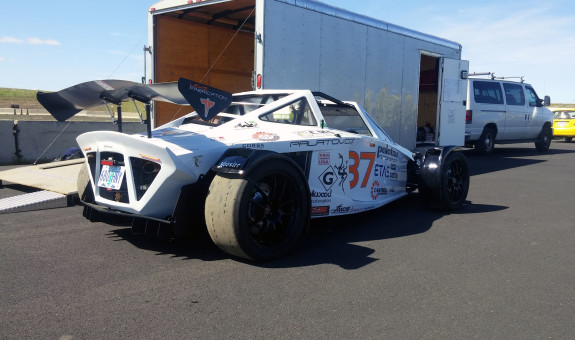
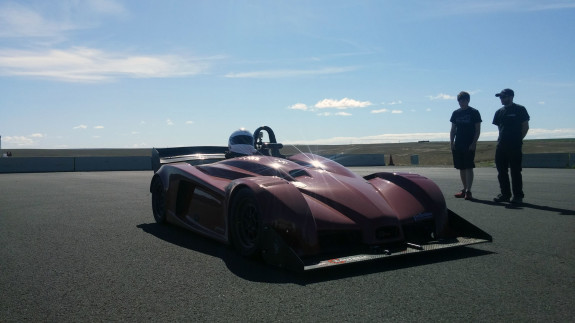
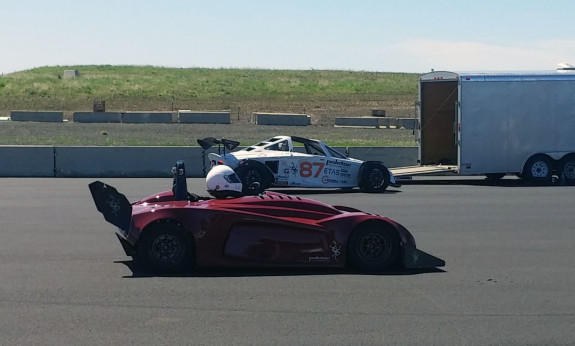
Overall, the day was encouraging. The crew did a great job and I am confident they will be a great asset on the Mountain. The blipper worked very well and the ECU seems content with what it’s doing. So we can move on to the next steps. And the car is FUN! 🙂 You’d think that 660 hp in a 2,100 lb machine would be scary, unmanageable and excessive. But the chassis in its current state of development can take it (and likely more!) so the car is confidence inspiring, playful and exhilarating. Neil took it out for a few laps and agreed. So our ‘civilian’ D2RS customer wanting 800 hp in his car might not be crazy afterall – he might just be right.
The day was not entirely without incident. We had a persistent wind of about 30 mph gusting to over 40 at times. It was perpendicular to the back straight and this has proven too much for the left wing endplates on both cars. Both wings are experimental foam-core units (the new production ones use bonded in aluminum ribs) so I’m actually impressed they’ve lasted this long. Both endplates were from the same (left) side of the car and found within a couple hundred feet of each other on a track that’s over 2 miles long so I don’t think it’s a coincidence. We’ll fix and reinforce (and eventually replace with updated wings when those are done). In the meantime, it’s another data point and another thing we’ve learned.
To give some idea of the wind, this is what the Columbia river looked like on the way back.
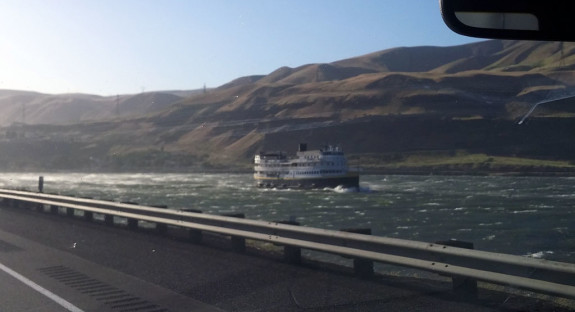
The van was having a hard time pulling the trailer into the headwind but eventually made it back. In a way that’s symbolic of our effort. We certainly don’t have an easy go of it, but we’re going and the view is spectacular.


